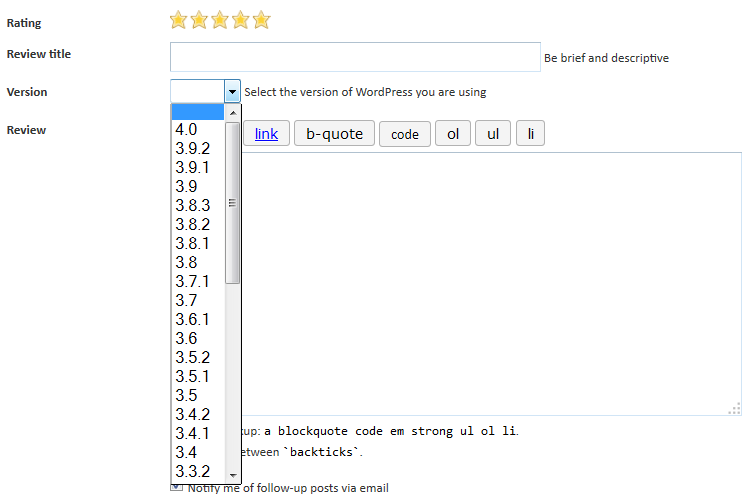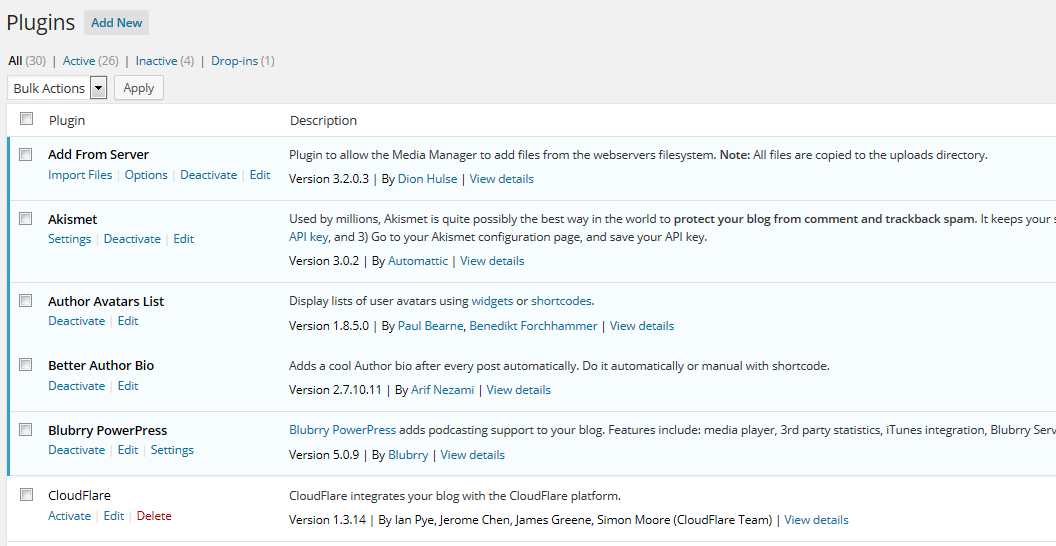Thanks to everyone who participated in the first “Rate and Review a plugin day”. After reviewing the #wppluginreviewday hashtag on Twitter, it’s clear that a lot of people submitted reviews to their favorite plugins. Based on an estimate by Richard Tape, 455 reviews were published on October 17th. When compared to 254 reviews on October 16th, that’s an increase of 180%. Here are a few noteworthy mentions of the hashtag in action.
https://twitter.com/_mandava/status/523321112222900225
So I delivered a plugin review on .org today. http://t.co/4ua0iG0XjQ #wppluginreviewday /cc: @stevengliebe :)
— David Decker (@deckerweb) October 17, 2014
For Rate & Review a #WordPress Plugin Day I gave kudos to @iThemesSecurity #wppluginreviewday
— Do_the Woo Podcast (@DotheWoo) October 17, 2014
Observations I Made While Submitting Reviews
It took 90 minutes to rate and review the plugins I’ve depended on for years. I noticed some of the plugins haven’t been updated since 2010. In some cases, the last review a plugin received was from 2012 or earlier.
When I announced the holiday, I asked users to browse to the bottom of the plugin’s description page and click on the broken or works box. As I submitted my reviews, I forgot about the compatibility box. When submitting a review, there is a drop down menu to select which version of WordPress I’m using. I used this in combination with my review to tell people if the plugin works or not.

Clicking the works or doesn’t work button is an easy task but it’s a separate action from submitting a review. It’s also the last widget on the description page and depending on the length of the description, may be hidden from view. I suggest merging the compatibility box into the process of submitting a review so it’s one action. Even though submitting compatibility information can be as simple as pressing a mouse button, not many do it.
The Disconnect Between WordPress.org and The Backend of WordPress
Your ratings, reviews, and compatibility checks are contributions to WordPress. It’s actionable data that millions of people use to determine whether or not to use a plugin. The backend of WordPress is an area millions of users interact with yet, the option to rate and review plugins as well as submit compatibility information doesn’t exist. The plugin details modal doesn’t show the compatibility box on the plugin’s description page and although you can read reviews, you can’t rate or review plugins.

The plugin management page in WordPress hasn’t seen a visual upgrade in a long time. Here’s what it looks like in WordPress 4.0.

WordPress 3.9 revamped the theme browsing experience while 4.0 introduced a refreshed plugin install and search experience. Perhaps it’s time to refresh the plugin management page. One suggestion is to create two different list views. The management page in 4.0 could be the slim, detailed view. The enhanced view could use the card concept as seen on the Add Plugins page. Instead of displaying the crowd sourced information, you’d be able to rate and review the plugin and submit compatibility info from within the card.

The problem with two different views is that a sub-set of users wouldn’t see the card view and stick with the default. In order to maximize the potential of obtaining crowd sourced data, the submission points have to be accessible by as many people as possible.
Tighter Integration Between The Backend and WordPress.org
In order to submit ratings and reviews, you need to be logged into a WordPress.org user account. I’m unsure on how to properly address this issue. One idea is for WordPress to provide a connection similar to Jetpack where I connect a WordPress powered site to my WordPress.org account. This could also act as an opt-in mechanism. Ultimately, I’d like to see better integration between the WordPress backend and the WordPress.org website.
I’m not advocating that I be able to browse the WordPress.org website from the backend of WordPress, that’s what browsers are for. I see plenty of opportunities to connect certain actions on WordPress.org to the backend of WordPress, such as the ability to create a forum post to receive support.
A New Annual Tradition
While you don’t need a special day to review plugins, it’s a unique feeling to do something so many others across the world are doing at the same time. I’m encouraged to see so many people who have rated and reviewed their favorite plugins. Based on the feedback we’ve received, this will likely become an annual tradition.
I wonder if anybody would get peeved if plugin authors added a “Rate me” and “Support” button in the plugin area next to the Deactivate and Edit links.
I’d be willing to try it out :D